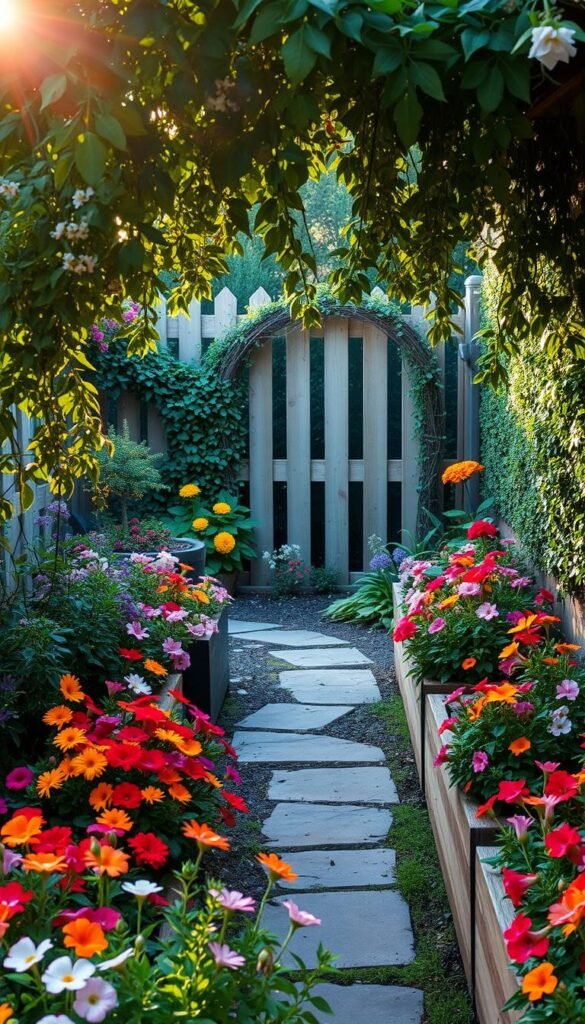Have you ever noticed how those awkward garden corners often collect clutter instead of beauty? Many homeowners struggle with underused areas that could become vibrant extensions of their yards. These spots hold surprising potential when approached creatively.
Reimagining these spaces doesn’t require professional help or big budgets. With thoughtful planning, you can turn overlooked zones into functional retreats bursting with color. The key lies in understanding your space’s unique conditions—like sunlight patterns and soil health—to select plants that thrive naturally.
Revitalizing a single area creates ripple effects across your property. You’ll gain versatile outdoor living space while boosting your home’s visual charm. Even better? Projects like these often increase property value more than larger, costlier renovations.
This guide simplifies the process, showing how to assess challenging spots and choose blooms suited to your climate. Whether you want a quiet reading nook or a lively entertainment zone, smart design choices make it achievable. Ready to unlock hidden possibilities right outside your door?
Overview of Transforming Neglected Garden Corners
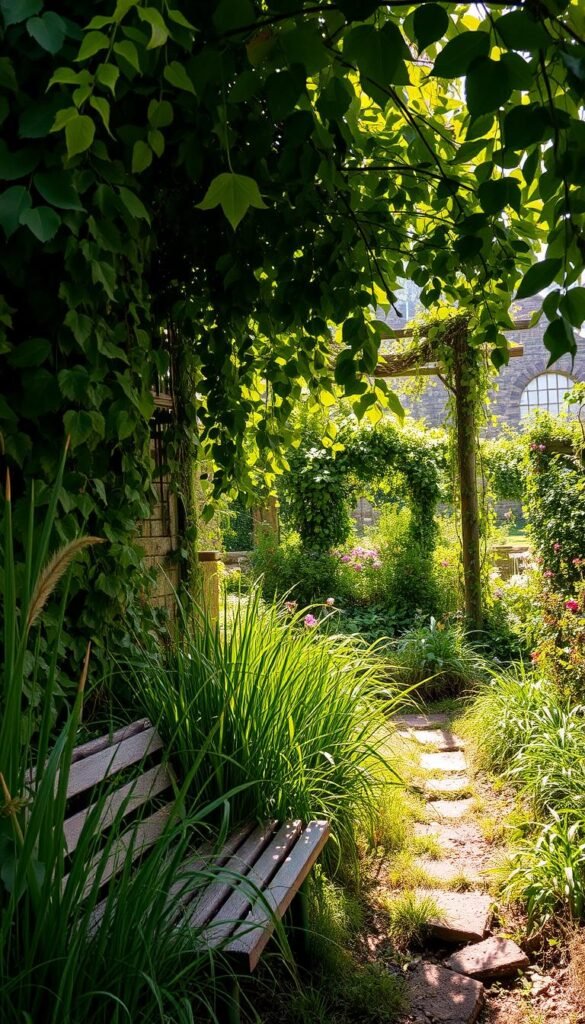
Does your yard have spots that never quite fit your vision? These challenging zones often become storage areas for old pots or patches where grass refuses to grow. But what if you could turn them into your property’s most charming features?
Finding Forgotten Spaces
Start by walking your property with fresh eyes. Look for:
- Bare patches where plants struggle
- Corners filled with unused tools
- Areas overshadowed by structures
These spaces often need simple fixes—not full renovations. A sun-starved nook might become a fern retreat, while a cluttered zone could transform into a compact herb station.
Why Small Changes Matter
Revamping overlooked areas offers surprising rewards. You’ll gain:
- Extra functional zones for relaxation or hobbies
- Improved visual flow across your landscape
- Increased property appeal with minimal effort
Even better? Fixing one problem area often inspires solutions for others. That awkward strip near your fence could become a butterfly-attracting border, while a muddy corner might evolve into a stone-paved reading spot.
DIY Flower Garden Makeover: Transforming a Neglected Corner into a Floral Haven
That empty spot behind your garage or beside the patio isn’t doomed to collect weeds forever. With basic tools and creativity, you can craft a lively retreat that matches your lifestyle. Let’s break down the process into manageable steps anyone can tackle over a weekend.
Start by sketching your vision. Grab graph paper or use a free design app to map out dimensions. Consider how much sunlight hits the area daily—this determines which plants will flourish. Measure twice to avoid costly mistakes later.
Next, focus on groundwork. Remove debris and test your soil’s pH using a $10 kit from any garden center. If drainage is poor, mix in compost or create raised beds. For compact spaces, vertical planters maximize color without crowding.
Choose blooms that thrive in your region’s climate. Native species like coneflowers or black-eyed Susans need less water and care. Cluster plants in odd-numbered groups for visual harmony, and layer heights to create depth. Add mulch to suppress weeds and retain moisture.
Finally, personalize with budget-friendly accents. Repurpose old ladders as trellises or paint stones as decorative markers. These touches make the space uniquely yours while keeping costs low. Remember: maintenance matters more than perfection—regular watering beats elaborate setups every time.
Identifying Your Garden’s Untapped Potential
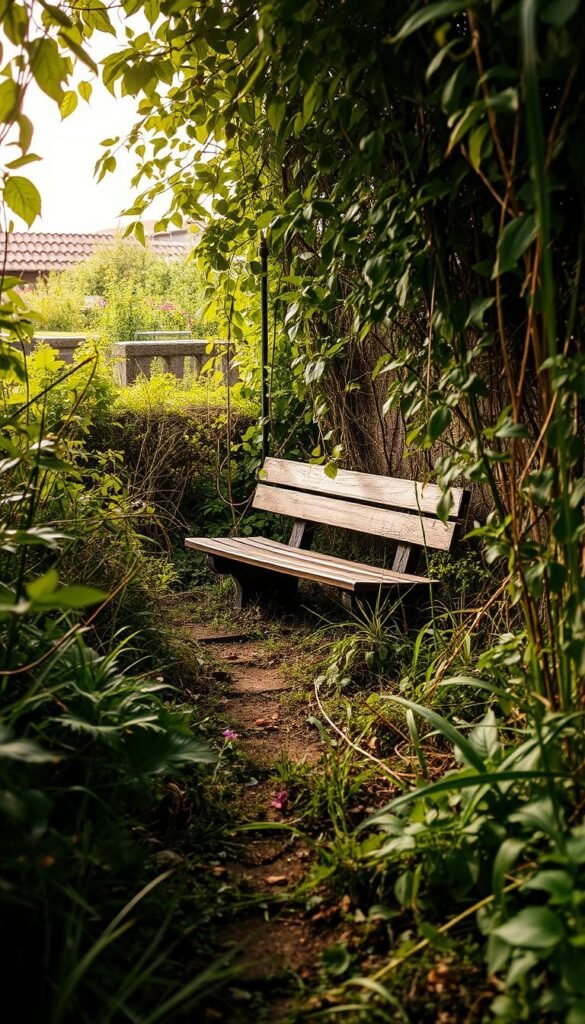
Unlock the mystery of those underused areas in your outdoor space. Every yard holds hidden opportunities waiting to be discovered—you just need the right approach to reveal them.
Assessing Light, Soil, and Space
Start by tracking sunlight patterns over three days. Note where shadows fall and how long direct light lasts. This simple observation helps match plants to their ideal spots.
Test your soil with a basic kit from local nurseries. Most cost under $15 and reveal pH levels plus nutrient gaps. If drainage feels sluggish, mix in perlite or organic matter—your plants will thank you.
Measure your available space using painter’s tape to outline boundaries. Consider vertical options like wall planters if ground space is limited. Remember: even narrow strips can host climbing vines or compact shrubs.
Planning for Focal Points and Function
Look around your property for items to repurpose. That old wheelbarrow? Perfect as a mobile herb planter. A leaning ladder becomes a rustic trellis for sweet peas.
When choosing centerpiece plants, make sure they suit your climate. A Japanese maple adds drama in temperate zones, while agave thrives in arid regions. Cluster three matching pots around it for visual impact.
Balance beauty with practicality by leaving walkway access. Use mulch paths between beds for easy maintenance. This thoughtful landscaping approach creates spaces that work as hard as they charm.
Incorporating Garden Art for a Striking Focal Point
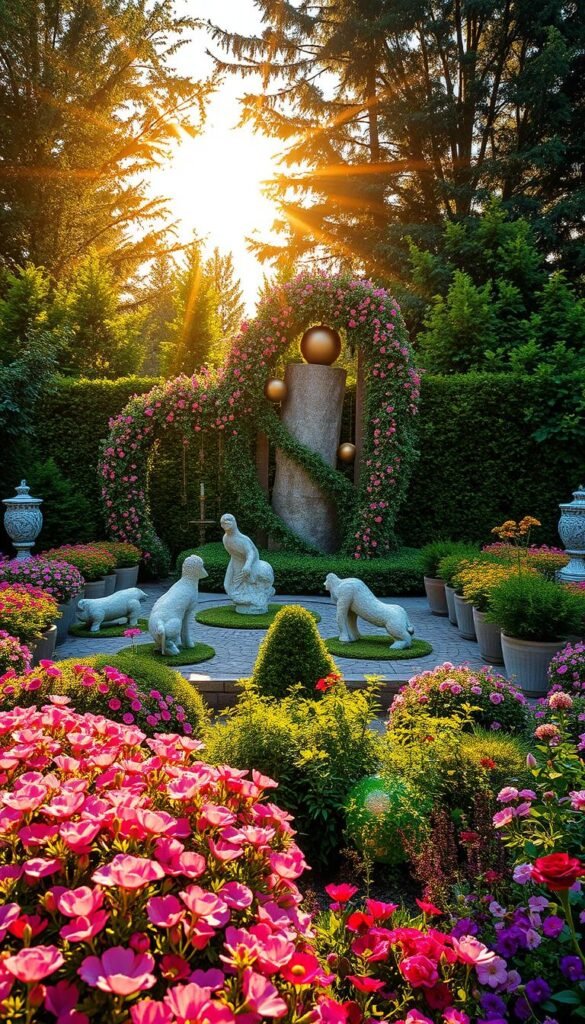
What transforms a simple planting area into an immersive experience? Strategic art placements act as visual anchors, turning bland corners into destinations. These pieces work like punctuation marks—they give rhythm to your design while reflecting your personality.
Choosing Sculptures, Fountains, or Birdbaths
Start by matching your art to the space’s proportions. A towering metal sculpture might overwhelm a tiny nook, while a petite stone frog could disappear in a sprawling bed. Consider materials that age gracefully—weather-resistant metals or textured ceramics blend well with nature.
Mix styles thoughtfully. A modern geometric piece pops against wildflowers, while vintage urns complement cottage-style blooms. For water features, compact recirculating fountains offer soothing sounds without complex plumbing. Birdbaths double as wildlife stations when placed near berry bushes.
Placement matters most. Position your centerpiece where sightlines converge—where paths meet or windows frame the view. Elevate smaller items on pedestals or surround them with low-growing plants. Rotate seasonal accents like colorful gazing balls to keep the scene fresh.
Don’t overlook hidden treasures. That chipped sundial collecting dust in the garage? Clean it and center it among lavender spikes. Old garden tools become wall art when mounted creatively. These personal touches make your space uniquely compelling without draining your wallet.
Creating a Cozy Seating Area That Invites Relaxation
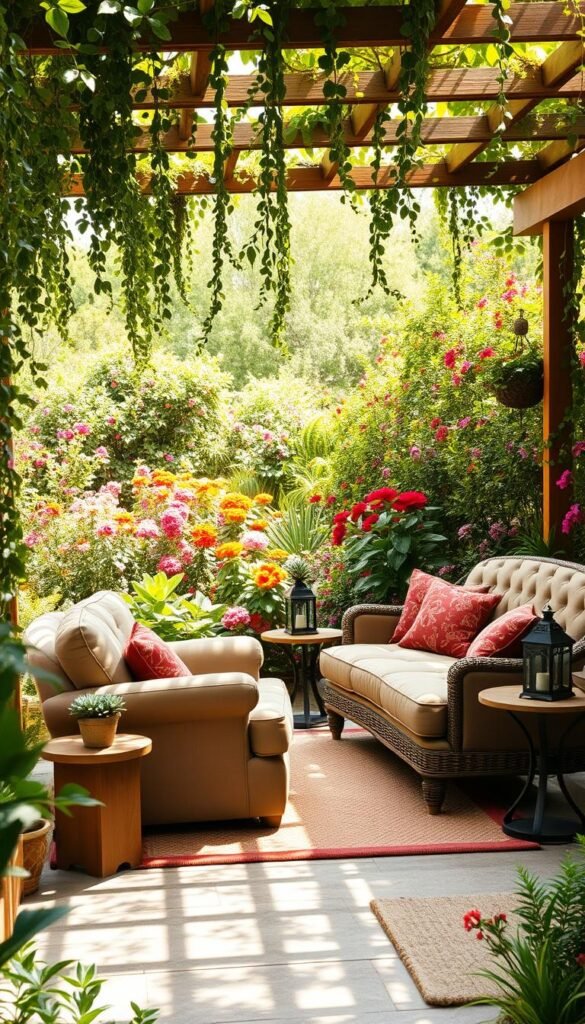
Your outdoor space deserves more than just visual beauty—it should welcome you to sit and stay awhile. A well-designed seating area turns forgotten corners into destinations for connection with nature or loved ones. Let’s explore how to craft spaces that blend comfort with personality.
Smart Solutions for Comfortable Lounging
Built-in benches maximize tight spaces while adding storage underneath. Use rot-resistant cedar or teak for longevity. For movable options, vintage chairs offer instant charm—sand them down and apply outdoor-grade paint for a fresh look.
Consider these popular choices:
| Option | Space Needed | Cost Range | Customization |
|---|---|---|---|
| Built-in Bench | 4-6 ft width | $200-$600 | High |
| Adirondack Chairs | 3 ft per chair | $80-$300 each | Medium |
| Vintage Bistro Set | 5×5 ft area | $150-$400 | Low |
Position your seating where afternoon shade naturally falls—under trees or beside tall shrubs. Add outdoor cushions with Sunbrella fabric that resists fading. For intimate conversations, arrange chairs 3-4 feet apart facing garden highlights like blooming hydrangeas.
Complete the scene with side tables for drinks and solar lanterns for evening ambiance. These touches create an inviting retreat that feels like your favorite indoor room—just with better breezes.
Integrating Functional Elements Like a Shed or ADU
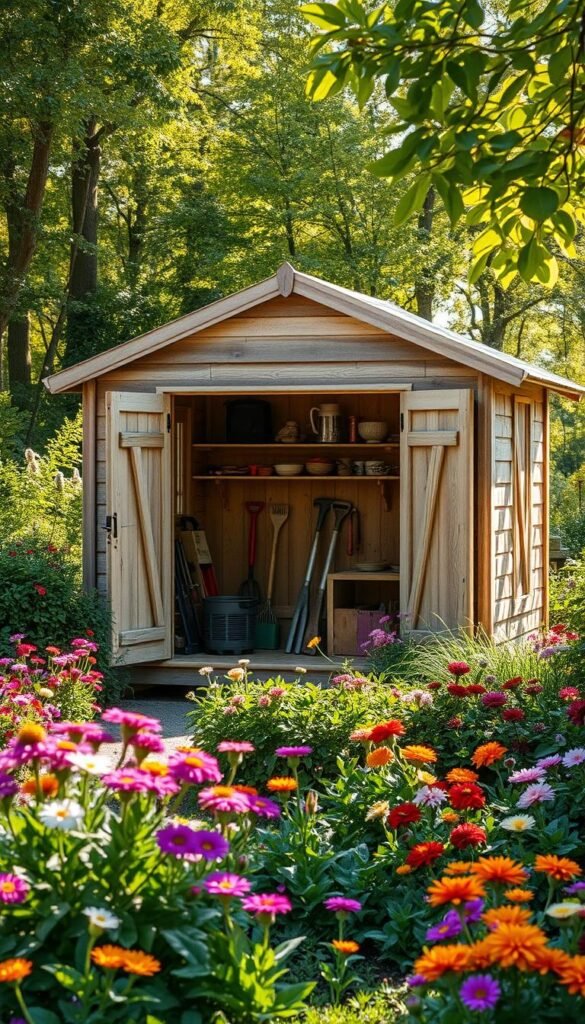
Corners often become forgotten edges, but they hold secret potential for smart upgrades. A well-placed shed can solve storage needs while blending into your landscape. Make sure to soften its edges with creeping thyme or clematis vines—these living curtains turn boxy structures into green features.
Disguise utilitarian designs with clever tricks. Paint wooden sheds in muted sage to match surrounding foliage, or add lattice panels for climbing roses. For metal units, install bamboo screens that rustle in the breeze. These touches maintain function while enhancing your cottagecore aesthetic.
ADUs transform underused spaces into valuable extensions. Compact studios or hobby rooms fit snugly against fence lines, creating private retreats. Check local codes first—most areas require:
| Structure Type | Minimum Setback | Common Permits |
|---|---|---|
| Storage Shed | 3 ft from property line | None (under 120 sq ft) |
| She-Shed/Office | 5 ft | Electrical, Zoning |
| Full ADU | 10 ft | Building, Plumbing |
Balance placement and practicality. Leave 18-inch pathways around structures for maintenance access. Cluster potted hydrangeas near entryways to guide the eye. With thoughtful design, your shed becomes a seamless part of the garden—not just a box in the corner.
Designing with Raised Garden Beds and Planters
Want to maximize your gardening space while keeping things tidy? Raised beds offer instant structure and better soil control for thriving plants. These elevated solutions work wonders in awkward corners where traditional planting struggles.
Choose cedar or composite materials for durable raised beds that resist rot. Arrange them in L-shapes to hug fences or create tiered layouts for visual depth. Fill with nutrient-rich soil mixed for your specific flowers or veggies.
For tight spots, vertical planters save floor space. Try stacking pots with trailing petunias or compact herbs. Metal troughs make striking modern statements when planted with ornamental grasses or dwarf shrubs.
Mix materials for interest—pair rustic wood beds with sleek ceramic planters. Add casters to mobile units for flexible garden designs. Remember: proper drainage prevents root rot, so drill holes in containers and layer gravel beneath soil.

